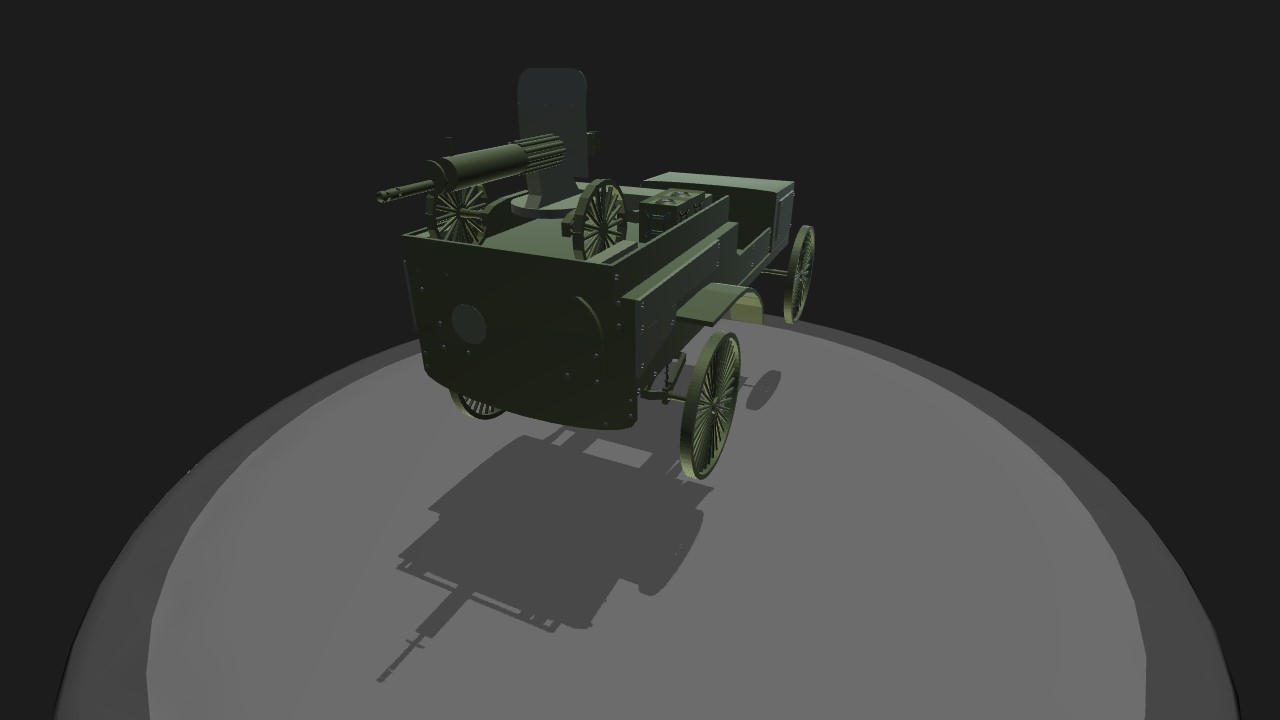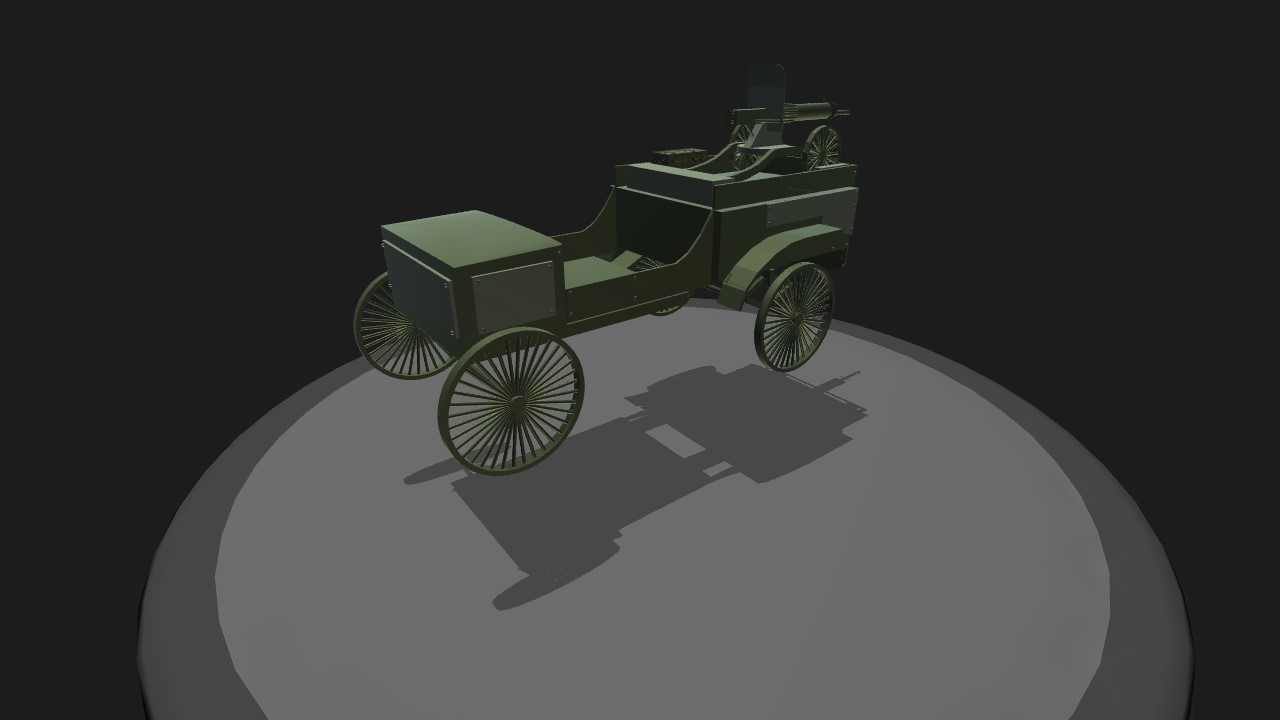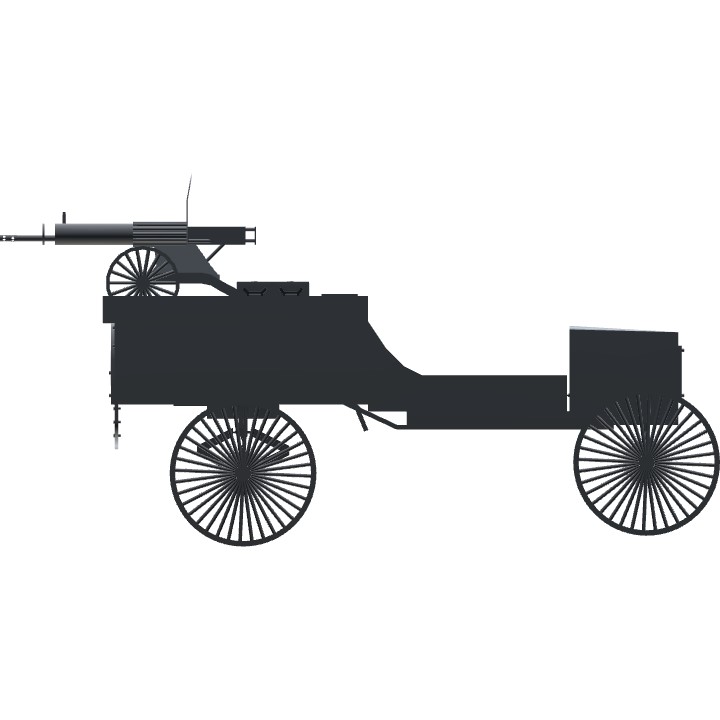The tachanka (Ukrainian language: ????´??? ), (Russian: ????´???) was a horse-drawn machine gun platform, usually a cart or an open wagon with a heavy machine gun installed in the back. A tachanka could be pulled by two to four horses and required a crew of two or three (one driver and a machine gun crew). A number of sources attribute its invention to Nestor Makhno.
A regular civilian horse cart could be easily converted to military use and back. This made the tachanka very popular during the Great War on the Eastern Front, where it was used by the Russian cavalry.[citation needed] The use of tachankas reached its peak during the Russian Civil War (1917–1920s), particularly in the peasant regions of Southern Russia and Ukraine, where the fronts were fluid and mobile warfare gained much significance.
Tachanka tactics were centered around taking advantage of its speed to surprise the enemy. Tachankas, before the introduction of the tank or automobile to the battlefield, were the only way to provide high-speed mobility for the heavy, bulky machine guns of World War I. The speed of the horse-drawn cart would be used to move the machine gun platform to a favorable firing position, and then the enemy would be fired upon before they had a chance to react. Since the machine gun pointed towards the rear of the cart, the tachankas also provided effective suppressive fire onto pursuing enemy cavalry after raids and during retreats. Nestor Makhno pioneered the use of the tachanka en masse. Makhno's forces relied so heavily upon the use of the tachanka that one Makhnovite referred to himself and his fellow troops as "a republic on tachanki".[8] The Revolutionary Insurrectionary Army of Ukraine used tachankas mainly against enemy cavalry. Makhnovists also used tachankas to transport infantry, thus improving mobility of the army (about 100 km each day). Tachankas soon became used by the Red Army, with the famous example of Vasily Chapayev.
Later, it was adopted by a number of armies, notably the Polish Army which used it during the Polish-Soviet War. Initially mostly improvised, with time the Polish Army also adopted two models of factory-made taczankas, as they were called in Poland. They were used during the Invasion of Poland of 1939 to provide cavalry squadron support. They were attached to every cavalry HMG squadron and HMG company of infantry.
AG1 and LandingGear--Opening the door
Pitch--Forward
Specifications
General Characteristics
- Created On Windows
- Wingspan 13.1ft (4.0m)
- Length 32.6ft (10.0m)
- Height 16.9ft (5.2m)
- Empty Weight 4,148lbs (1,881kg)
- Loaded Weight 4,414lbs (2,002kg)
Performance
- Power/Weight Ratio 0.763
- Wing Loading N/A
- Wing Area 0.0ft2 (0.0m2)
- Drag Points 11359
Parts
- Number of Parts 606
- Control Surfaces 0
- Performance Cost 2,760





